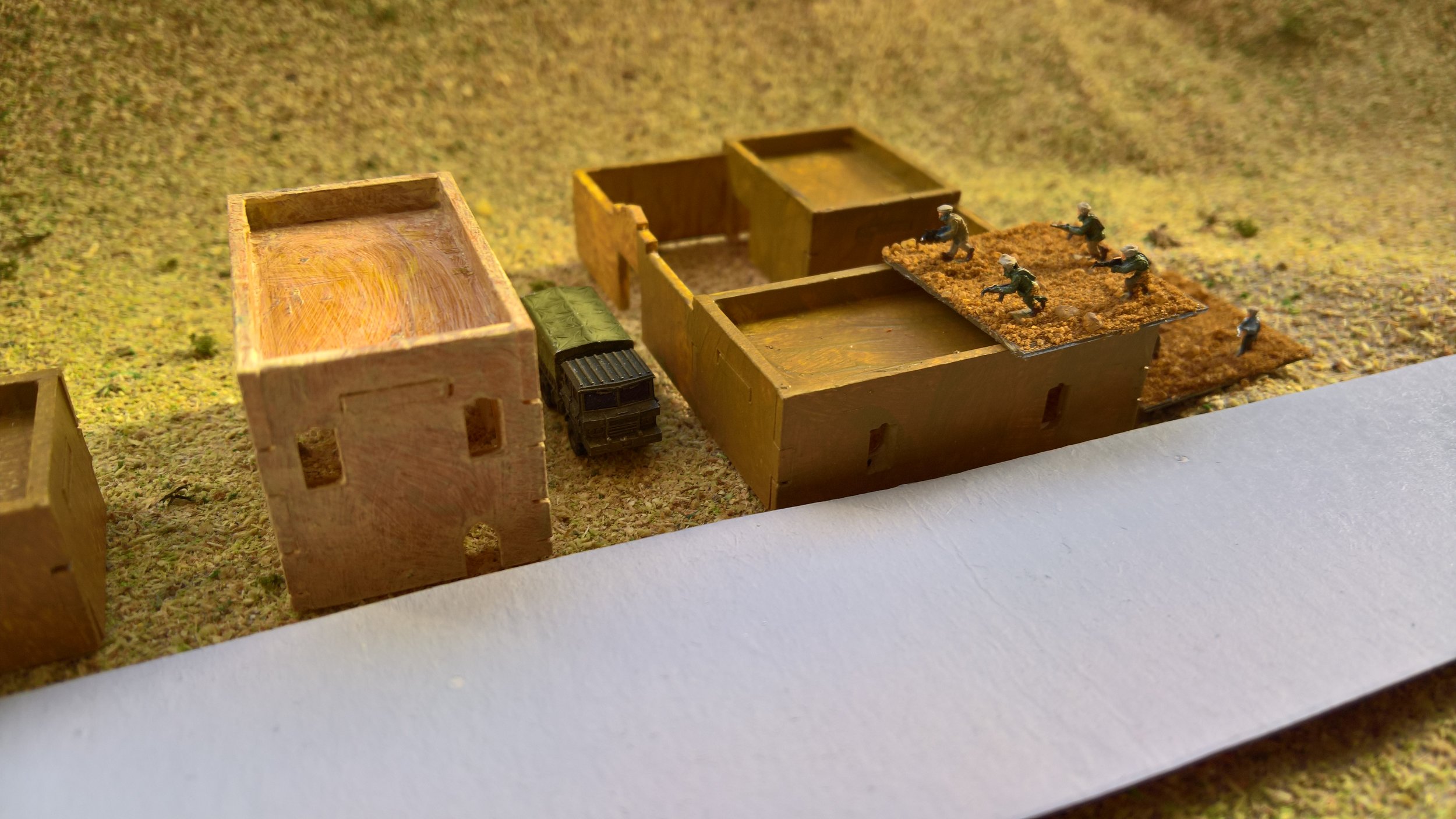There are several problems that pretty much every wargame designer will encounter when writing a rule set. Essentially they are issues that have no good answers and they usually arise from the fact that you are taking a fluid and imperfect environment and then attempting to impose a standard set of mechanics and constraints in order to turn it into a playable game.
A classic example of this is how to handle battlefield information asymmetry or 'fog of war'. Generally, by improving the way that a game system handles fog of war, you increase the admin burden, increase complexity and slow the pace of play, which may not be what you are after as a designer. Incidentally Intervention attempts to address this by using a combination of Point of Interest Markers, 6mm scale units and hidden army lists, but we'll probably go into fog of war in a bit more details in another blog post.
The Cover Dash
Similarly, another almost unavoidable problem that is frequently encountered is that of the 'cover dash'. This problem is articulated well in chapter 1 of Featherstone's Advanced War Games, but it basically comes down to the issue of where a unit is when it is fired upon. Generally we assume that units are fired upon either at the beginning or end of their movement, however this allows units to dash across open terrain between areas of cover and somehow avoiding being fired upon. Incidentally, the name Intervention partly stems (in part) from our initial attempts at designing mechanics to overcome this problem.
For the sake of simplicity, we shelved some of the more ambitious methods at solving this problembut it remained something we were uncomfortable with. However, the issue of the cover dash came into particularly stark relief when play-testing the rules for Rebel forces. A group of soldiers had occupied a cluster of buildings at a crossroads, the Rebel player hopped two VBIEDs between areas of cover to within 12 inches and then drove them right up to the dug-in soldiers. There was very little the defending player could do about it and, in real life they would at least have had an opportunity to shoot back or try to stop the advancing vehicles.
Part of the fun of Intervention is the mini stories that emerge through play: the special forces unit that suffers an injury while fast roping onto a target; the heroic conscripts that charge across open terrain to seize an objective; or in this case the desperate defence of Check Point Omega against the Nasrallah Martyrs' VBIEDs. We want the rules to help generate this sort of narrative.
Designing a Solution
The original published solution was to allow units to overwatch and delay their activation until later in the turn. This allows a player to prevent the enemy from sneaking forward after other units have spent their actions for the turn. However this doesn't prevent a player from moving a unit from one area of cover to another within the same activation.
In the forthcoming update to Intervention we have addressed this by allowing overwatching units to interrupt an enemy unit's activation. When an opponent has declared their intended action for a unit, a player may declare that they are bringing one or more units off overwatch to attempt to intervene.
While this may seem like a small and quite sensible change, it breaks a core assumption about the order in which units activate. Very quickly serious questions are raised elsewhere that must be addressed in as elegant a way as possible.
- If multiple units on overwatch activate, what order do they activate in?
- What happens if the enemy unit is knocked out before all the overwatching units activate?
- What happens if an overwatching unit is hidden and doesn't get to activate?
- Can an overwatching unit itself be interrupted by an enemy overwatching unit? What order are actions resolved in?
- How/when does crossfire apply?
- How does all this affect IEDs?
These were just some of the questions that needed answering and, while a specific rule could be written to cover each situation, this only adds complexity and would never cover all of the weird situations that players manage to generate.
The full revised overwatch rules are included in the forthcoming Intervention core rules update, but in essence: Overwatching units activate in chronological order, roll 1xD6 to activate each overwatching unit, on a 2+ the unit activates successfully. If a unit is scheduled to come off overwatch and does not or cannot see the triggering activity, it loses its activation this turn. While not a perfect replication of the ebb and flow of combat, this allows players to respond to enemy activity more dynamically and it helps to avoid the cover dash.
